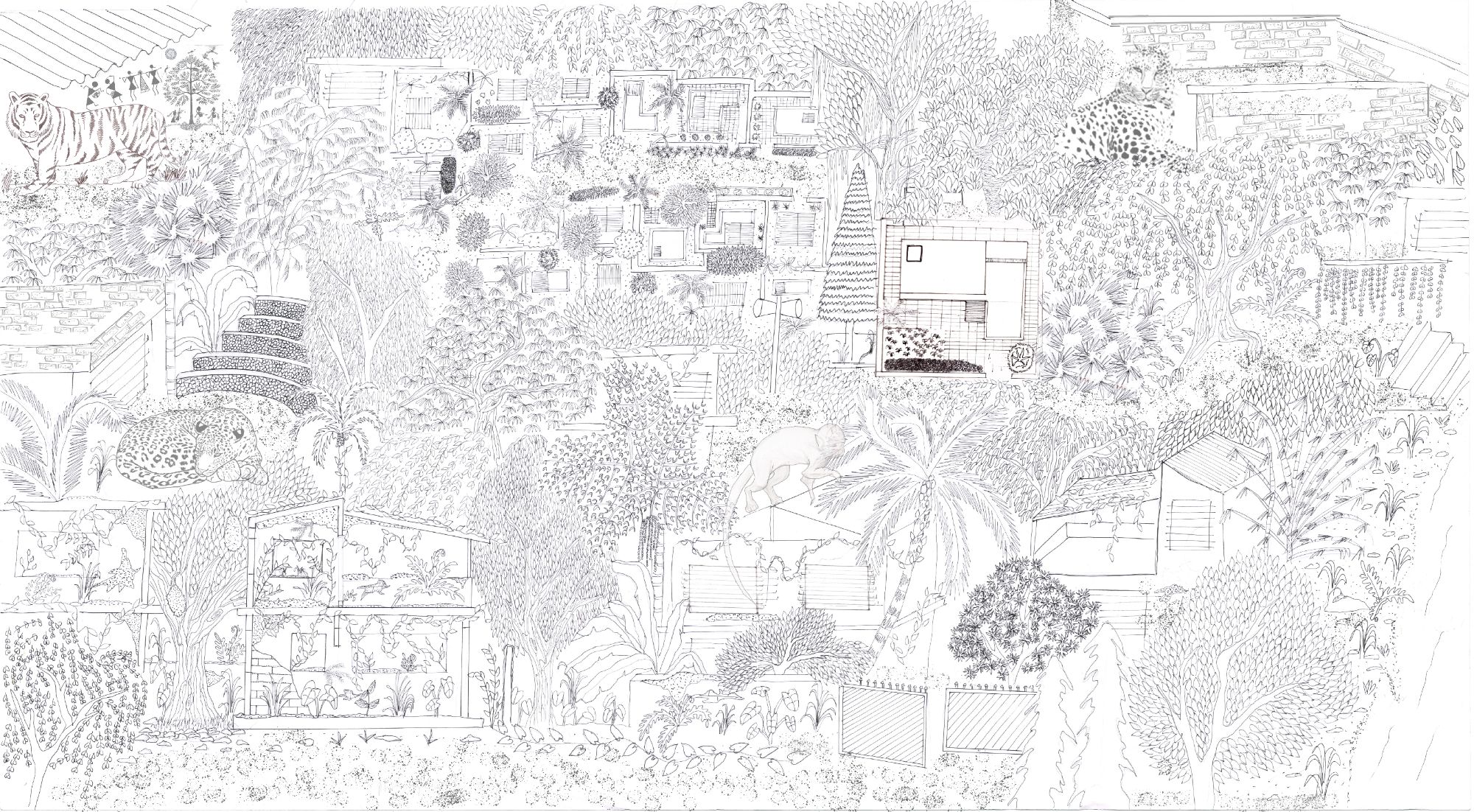
Forest of Blurred Boundaries, Parth Kocharekar and Vedija Thakre
Allied Studies, Sabaa Giradkar
What is a Forest? The Case of Sanjay Gandhi National Park
Environment as a Practice of Care
This course through its long term engagament discusses how does the practice of Environment gets crafted through the notion of Care? This year, the studio dwelled in asking ‘What is a Forest?’ in the context of Snajay Gandhi National Park Mumbai. The city hugs the forest from all the ends which means that forest lies within the city limits and is one of the rarest cases across the globe.
The Forest or the Jungle is largely understood as the altering but densly growing vegetation inhiabiting the multi specie flora and fauna and the indegenous communities which are not found within the built cities of humans. Also that the starking wilderness exists only amongst the greens and gets blurred where the humanscapes become more dominant. For prima-facia this appears to be acceptable, however this course uses the tool of ethnographic studies to deeply interrogate further the notions of wilderness vs civic, pristine vs contaminated, non human vs the human, forest vs the city etc.
The emphasis of the study is to build on the socio-cultural visibility and invisibility of humans and non human subjects of everyday, that live by the contested physical edge of the forest. The politics of the land ownership and tenure, survival and sustainance of different (stakeholder) life forms, adminsitrative boundaries and human- non human practices of safety and security, all add up to the craft the lived experiences. Students worked with six different edge built conditions of the forest like Tribal Settlement of Dharkhadi in Dahisar East, Temple Institution, Informal settlement and Gated Community in Abhinav Nagar in Borivali East, Information Park, Mahada Colony and State Reserve Police Force in Goregaon East, and the cycling track alongside Vihar Lake and documented the everyday life and living practices through anecdotes. These annecdotes narrates the active and passive voices of multistakeholders inhabiting the ‘city-forest’ (edge).
The study through the ‘Landscape of Care’ drawing revealed the different interdependencies of the city-forest hence further questioning how does one define where does the forest end and where does the city starts or vice versa?
The evidences of leopards creating nuisance in the human vicinity were paralleled by the anecdote in Dharkahdi where the leopard came and sat on the roof of the house and after being fed well returned to its home. This mutuality was built over the time between the man and the cat and is being practiced till date. In another case the abandoned quarries within the forest now act as bathing and washing ponds, places of leisure for the adjacent communities. The SRPF site nudges to rethink the idea of coexistence where it has made huge walls to stop the influx of humans from neighbouring communities, however with all open arms it invites the Aarey forest alongwith a tribal community.
These anecodatal narratives were constantly cross read with the historical data presented through three different periods and ideas of Forests; 1. Colonial Forestry of Acquisition and Preservation 2. Post Colonial State Forestry of Conservation and 3. Recent Carbon Sink Forestry of Disaster Management. These three helped frame the forest policies, envrionmental movements across the globe and the present promise to combat the phenomenon of Climate Change.

Sanjay Gandhi National Park with the selected sites of study

Forest within a Forest, Sahil Sawant and Samiksha Bhagde

Forest of Blurred Boundaries, Parth Kocharekar and Vedija Thakre

Forests of Continnum, Harsh Shah and Aashika Thole


New life emerging at the abandoned quarries, Prathamesh Deshmukh and Vatsal Visharia